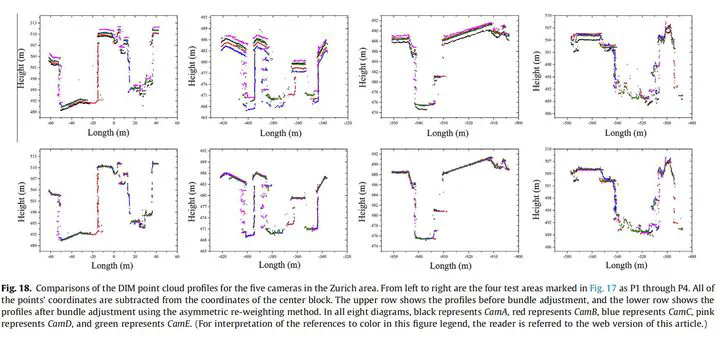An Asymmetric Re-Weighting Method for the Precision Combined Bundle Adjustment of Aerial Oblique Images

Abstract
Combined bundle adjustment is a fundamental step in the processing of massive oblique images. Traditional bundle adjustment designed for nadir images gives identical weights to different parts of image point observations made from different directions, due to the assumption that the errors in the observations follow the same Gaussian distribution. However, because of their large tilt angles, aerial oblique images have trapezoidal footprints on the ground, and their areas correspond to conspicuously different ground sample distances. The errors in different observations no longer conform to the above assumption, which leads to suboptimal bundle adjustment accuracy and restricts subsequent 3D applications. To model the distribution of the errors correctly for the combined bundle adjustment of oblique images, this paper proposes an asymmetric re-weighting method. The scale of each pixel is used to determine a re-weighting factor, and each pixel is subsequently projected onto the ground to identify another anisotropic re-weighting factor using the shape of its quadrangle. Next, these two factors are integrated into the combined bundle adjustment using asymmetric weights for the image point observations; greater weights are assigned to observations with fine resolutions, and those with coarse resolutions are penalized. This paper analyzes urban and rural images captured by three different five-angle camera systems, from both proprietary datasets and the ISPRS/EuroSDR benchmark. The results reveal that the proposed method outperforms the traditional method in both back-projected and triangulated precision by approximately 5– 10% in most cases. Furthermore, the misalignments of point clouds generated by the different cameras are significantly alleviated after combined bundle adjustment.
Publication
ISPRS Journal of Photogrammetry and Remote Sensing